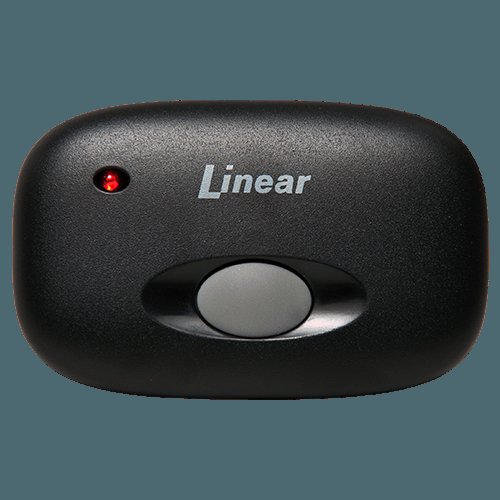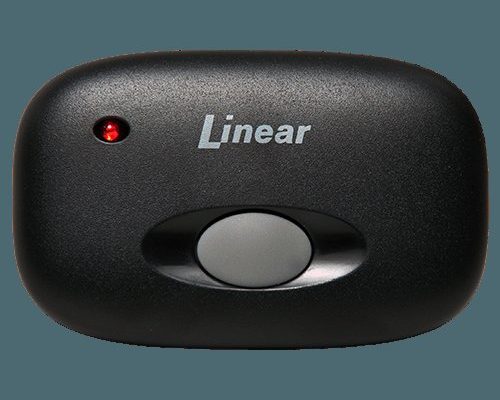
Garage door tech isn’t magic, but it can seem that way when you’re standing in the rain, punching numbers, hoping the thing just works. Linear’s line of remotes (yep, that same solid, brick-like clicker you’ve probably had for years) promises convenience, but not every model or system plays nicely with add-ons like keypads. Let’s dig into what’s possible here—because nobody wants to buy gear that doesn’t work together.
How Linear Garage Remotes Communicate With Keypads
Linear garage door openers use radio signals to talk to remotes and keypads. Picture it like a secret handshake: each device has a unique “code” it sends to the opener, letting it know, “Hey, it’s really me.” Most modern Linear openers, and their remotes, rely on rolling code technology. That means the code changes every time you hit the button, so hackers can’t just snag a code out of the air.
When you add a keypad to the mix, it needs to sync up with your garage opener in much the same way a handheld remote does. The keypad learns the right code, stores it, and then sends its own “open sesame” signal each time you type in your PIN. Here’s the thing: not every Linear opener or remote is automatically compatible with every keypad. Sometimes it comes down to what radio frequency your system uses (for example, 318 MHz is common in Linear models), or which “generation” of code system you’ve got (fixed code vs. rolling code).
So, before you buy any add-on keypad, it’s smart to peek at your opener’s model number and check the little sticker on your remote. The details there make all the difference.
Which Linear Remotes Work With Keypads?
Honestly, this is where it gets a little messy. Some older Linear remotes use a fixed code—meaning they always blast out the same signal. These often support basic keypad syncing, but they’re not the safest option anymore. Most newer Linear models use rolling code tech (also called MegaCode for this brand), and that changes the story.
If your Linear opener says “MegaCode” or “Learn Button” on it, you’re in luck. Compatible keypads will sync up with a few easy steps—no advanced skills required. They “pair” by learning the opener’s current code, just like when you program a new remote. But if you’ve got an ancient system, or a non-MegaCode branded keypad, you might be out of luck. Mixing old fixed code and new rolling code tech rarely works seamlessly.
To make things concrete, here’s how it usually breaks down:
- MegaCode remotes: Generally support keypad sync. Look for a keypad labeled as MegaCode-compatible.
- DIP switch/fixed code remotes: May only sync with specific, older keypads. Security is limited.
- Other brands/universal keypads: Might or might not sync, depending on tech (and luck).
When in doubt, always match “generation” and frequency between your keypad, remote, and opener for best results.
Step-by-Step: Syncing a Linear Keypad With Your Opener
You might be wondering, “How hard is this, really?” Good news: syncing a Linear keypad is usually less intimidating than assembling furniture from a flat-pack store. Here’s a typical sequence:
- Find the “Learn” button on your opener: This is usually located on the back or side of your garage door motor unit. It’s sometimes labeled as “Learn,” “Program,” or might just be a colored button under a small panel.
- Press the Learn button: Hold it until the indicator light turns on (usually about two seconds). This puts your opener in pairing mode. You’ve got about 30 seconds to complete the next steps, so move fast but don’t panic.
- Enter your PIN on the keypad: On your Linear keypad, type the code you want to use. Punch in the numbers clearly—no racing, but don’t dawdle either.
- Press the “Enter” or “Learn” key on the keypad: This varies by model. Either way, a light should blink to tell you the opener and keypad just “shook hands.”
- Test your keypad: Step back and punch in your code. If the garage door moves, you’re golden.
If it doesn’t work, double-check your opener model, keypad compatibility, and of course, the battery in your keypad. Yes, it’s basic, but dead batteries are the gremlins of garage door troubleshooting.
Common Problems When Syncing Linear Keypads
Let me explain: syncing is usually a breeze, but there are a few potholes on this road. For starters, different Linear openers may have slightly different sync procedures. If you skip a step or miss the timing window, nothing happens. That’s enough to make anyone think their keypad is broken, when really it’s just a missed cue.
Sometimes, the opener simply won’t respond. Maybe the memory is full—most models can only remember a certain number of remotes and keypads (usually five to ten). If you’ve hit that cap, you’ll need to erase old codes before adding a new device. This is done by holding down the Learn button for an extended period (usually 10–30 seconds) until the light blinks, wiping all paired remotes and keypads.
Batteries are another sneaky culprit. Keypads, especially, need a fresh battery to fire off a strong code signal. If yours is sluggish, check for corrosion or swap in a new battery. Also, weather matters: cold or wet conditions can weaken signals or cause the buttons to stick. Don’t forget to check for physical obstructions—metal objects or even your car’s frame can block wireless signals.
If your keypad still won’t sync after checking all this, it’s time to check compatibility. Sometimes a universal keypad just won’t “speak the same language” as your MegaCode opener.
How Linear Keypad Sync Compares to Universal Garage Keypads
Let’s be honest: brand loyalty is nice, but it’s not always practical. Some folks grab a universal keypad because it’s cheaper or easier to find. Universal models claim to work with most big brands, including Linear, but they’re not a sure bet.
Universal keypads usually let you program different codes for different brands, but the actual “sync” process is more complicated. You’ll often have to enter a brand code, then a PIN, then hope you picked the right frequency setting (sound fun yet?). Compatibility isn’t guaranteed, especially for rolling code systems.
In contrast, a Linear-branded keypad is generally plug-and-play with Linear MegaCode openers. You skip the guesswork and get full support if something goes wrong. Sometimes you really do get what you pay for—especially when it comes to pairing and troubleshooting.
If you have an older opener, though, or a mixed-brand garage setup, universal keypads are worth a try. Just set your expectations. They’re flexible, but not always perfect.
Resetting, Pairing, and Removing Linear Garage Remotes and Keypads
Over time, you might want to clear out old remotes or keypads—maybe after moving, or if you’ve lost a device. The process to reset or remove devices from a Linear opener is actually pretty simple. Here’s how you do it:
- Erase All Paired Devices: Press and hold the “Learn” button on your opener for about 10–30 seconds. The light will blink. That’s your signal that every synced remote, keypad, and opener code is now gone. You’ll need to re-pair any remotes or keypads you want to keep.
- Add New Devices: With memory wiped, just follow the original pairing process (see earlier section). Each remote or keypad will need to be paired individually.
- Check Compatibility: Whenever adding a new device, always double-check that it matches your Linear system’s frequency and code tech—otherwise, you’ll be pressing buttons till your fingers ache.
This reset comes in handy if you suspect someone has an old remote, or if a keypad gets stuck and won’t sync, no matter what.
Battery Life and Maintenance Tips for Linear Garage Keypads
Battery issues don’t sound exciting, but honestly, they cause more headaches than anything else. Most Linear keypads run on a 9V battery—easy to swap, but just as easy to forget about. If your keypad is unresponsive, laggy, or only works when you press the buttons a certain way, a battery swap is your first fix.
To keep your system reliable:
- Swap out batteries once a year, even if you think they’re fine.
- Use a good-quality, brand-name battery for longer life (no dollar store specials).
- Check for corrosion if your keypad is mounted outside—clean with a bit of baking soda if needed.
- Keep keypad buttons clean; sticky keys can prevent proper syncing or code entry.
Taking five minutes every spring to check your keypad can save you from “locked out in your pajamas” disasters.
Can You Use Multiple Remotes and Keypads With One Linear Opener?
You might have more than one driver in the family—so naturally, you want to know if your opener can juggle several remotes and a keypad at once. The answer is yes, within limits. Most modern Linear openers can remember up to 5–10 paired devices, whether they’re remotes or keypads.
That means you can have one keypad outside, a couple of remotes for the cars, and maybe a spare in your junk drawer. Each one syncs individually using the Learn button process. The only catch? If you reach the memory maximum, the opener will stop accepting new devices until you erase some old ones.
Here’s a tip: if you ever move homes, or buy a used house with a Linear opener, always clear out the memory. You don’t want the previous owner’s old remote working on your door.
Final Thoughts: Is Syncing a Keypad to Your Linear Garage Remote Worth It?
Syncing a keypad to your Linear garage remote system makes life easier—no question. A keypad is a backup when your hands are full, your remote is lost, or you’re not keen on hiding a spare clicker under the doormat. But, and it’s a real “but,” you need to make sure your keypad and opener speak the same technical language. MegaCode systems usually pair up with no fuss; older or off-brand setups might leave you hanging.
Pairing, troubleshooting, and resetting all come down to a few simple steps, a sharp eye on compatibility, and fresh batteries. If you ever get stuck, the solution is almost always in the opener’s manual or a quick compatibility check. Once you’re synced up, you’ll wonder how you ever managed with only a remote. Garage tech isn’t magic—but when it works right, it sort of feels like it.
